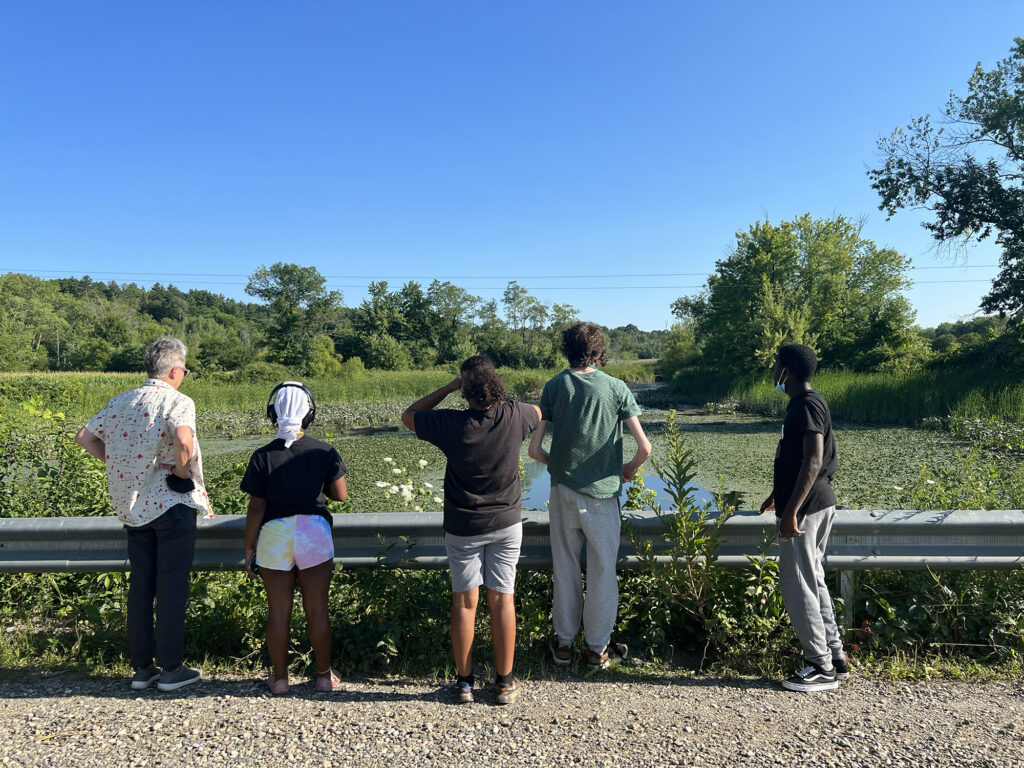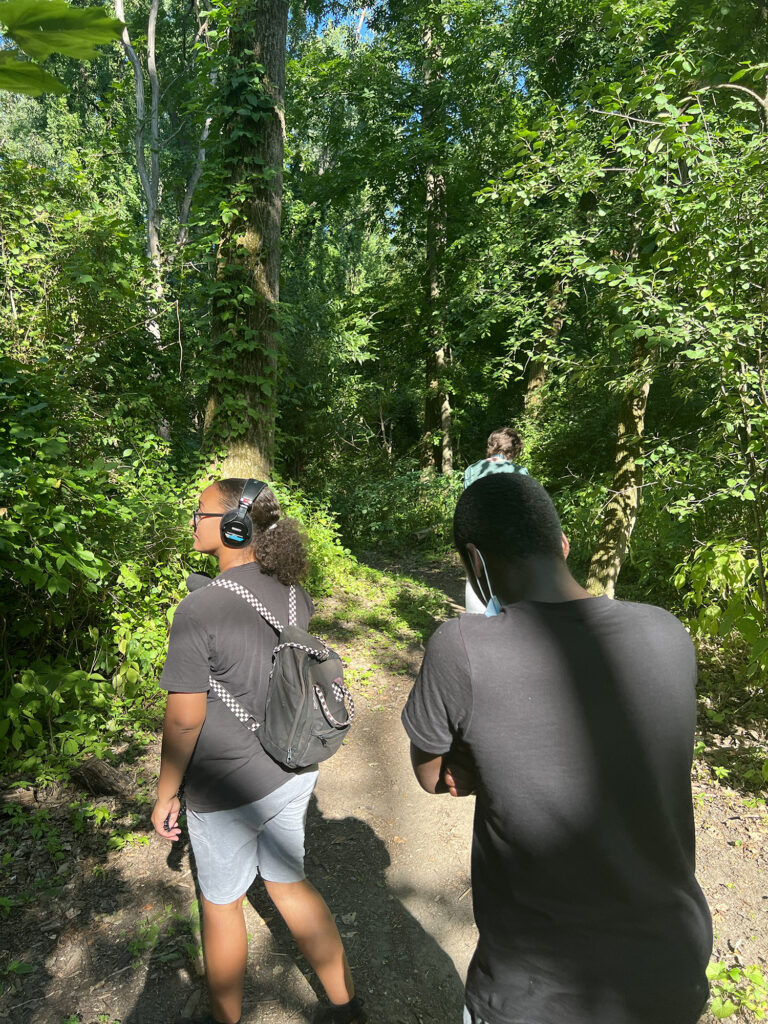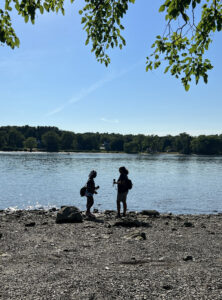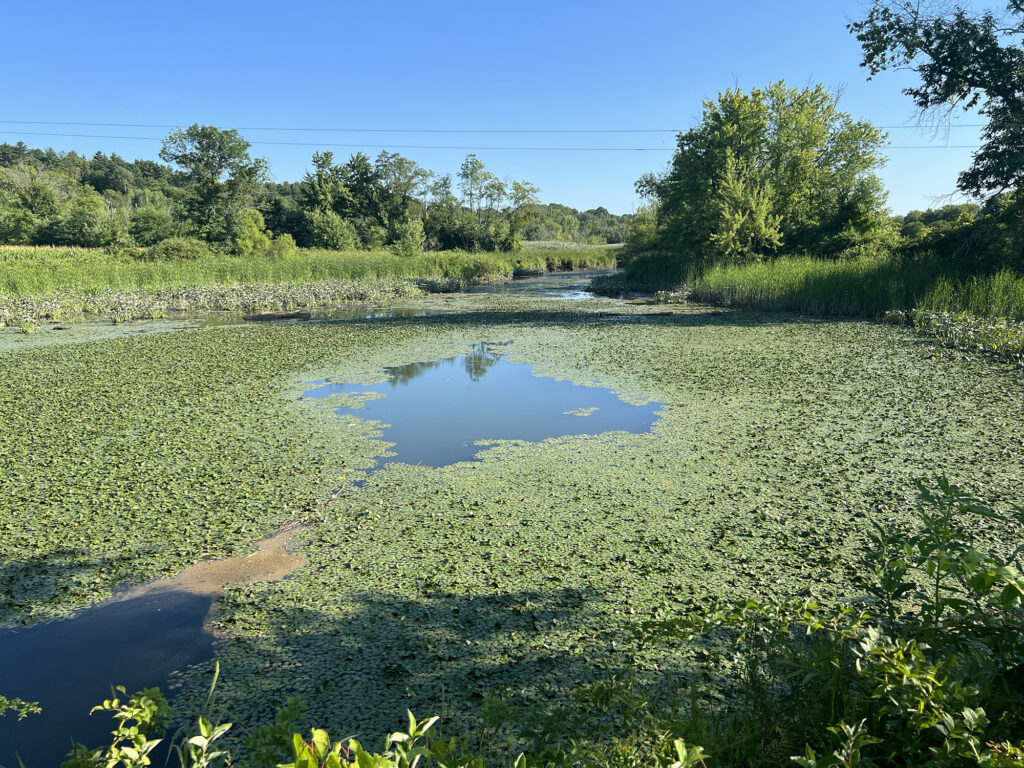
On August 3rd, Water Justice Lab youth fellows combined research on water justice and Indigenous sovereignty by learning about and visiting Papscanee Island. This nature preserve south of current-day Rensselaer on the Hudson River was recently returned to the Stockbridge-Munsee community. Before our field trip to Papscanee, we were fortunate to speak with Sherry White of the tribal historic preservation office for the Stockbridge-Munsee. Drawing on over twenty years of experience in historic preservation, Sherry answered our questions about the history of the island, the archeological work that has taken place there, and the ongoing connection the Stockbridge-Munsee community has to the land and the creatures who live there. Youth fellows shared the work they’ve been doing tracing our local water systems and sampling the macroinvertebrates and other creatures who call them home.

We started our exploration of Papscanee with by reviewing and discussing a the Story Map created by the Open Space Institute, who purchased and preserved the land in the 1990s when it was threatened with development, and returned it to the Stockbridge-Munsee in 2021. From the story map, we learned about the Stockbridge-Munsee’s odyssey of forced removal from their ancestral lands over a period of centuries, eventually ending in Shawano County in North central Wisconsin, where they have lived for the last 120 years. We also took note of the deep history of agriculture on Papscanee Island, learning from this video there is archeological evidence that the rich flood plain soil has been farmed continuously until today, and that the Mohican people–ancestors of the Stockbridge-Munsee–were present there as long as 12,000 years ago.
After we explored the Story Map, Sherry joined us virtually to discuss what we learned and answer our questions in a recorded conversation that will be part of our ongoing efforts to document Source to Estuary via radio segments. We learned about Sherry’s long tenure with the tribe’s historical preservation office, and her role in helping make sure the land is eligible for the national register of historic places, which will help protect it from constant threats of development, which span from a Marina to a highway overpass to a National Grid pipeline. Sherry explained how important it is to the Stockbridge-Munsee community that the land be preserved as it is, with the waters, plants, insects, and animal life present and able to thrive alongside the land cultivated for corn and squash. She was glad to hear about Water Justice Lab fellows’ efforts to interact with and document macroinvertebrate life in streams, reminding us that water justice is not just for human drinking water and other uses, but for all the creatures who rely on it. She told us it is particularly gratifying for her to see the turtles still living in the ponds that are intact on the island, because turtles play an important role in Mohican history and cosmology.

We finished our day with a hike through the forests of Papscanee Island to the shores of the Hudson, where we observed a natural shoreline with mud, rocks, and trees, rather than the concrete walls and boat ramps we often find when visit the Hudson in Troy and other urban areas. Youth fellows recorded audio and their reflections about the river and the island, and we observed island creatures ranging from a snake and a tree frog to monarch butterflies and rare plants. As we left the preserve, we stopped to visit the pond and greet the turtles. They were mostly out of view, taking respite in the cool water as it was sunny and hot, but we did see one from a distance as we left, moving through the water near a floating log. With Sherry’s words echoing, we were grateful to see turtle habitat present on land that might otherwise have been developed into a highway overpass without the efforts of the Stockbridge-Munsee and the Open Space Institute to protect it.

